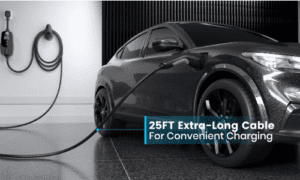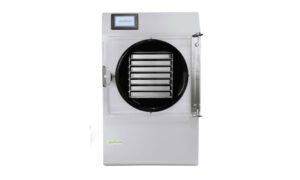Introduction
Industrial operations today consume roughly 37 percent of the world’s final energy use, representing both a significant cost center and a major source of carbon emissions. As companies pursue smarter manufacturing, the spotlight has turned to low-power electronics as a strategic lever for reducing energy intensity, lowering operating expenses, and advancing sustainability goals. In this article, we explore how cutting-edge, energy-efficient components are enabling the factories of tomorrow, slashing carbon footprints, and delivering compelling return on investment (ROI) through targeted upgrades.
The Strategic Imperative of Low-Power Electronics
Why Energy Efficiency Matters
- Cost Reduction: Many manufacturing plants bleed millions of dollars annually due to preventable energy waste. By optimizing the power profile of control and sensing systems, organizations can significantly curtail utility bills and improve their bottom line.
- Regulatory Pressure: International standards—such as minimum energy performance requirements for motors and pumps—are tightening. Compliance often necessitates retrofits or full replacement of legacy equipment, making efficiency enhancements not only desirable but mandatory.
The Low-Power Advantage
- Extended Equipment Lifespan: Lower operating currents translate into reduced heat dissipation, which in turn diminishes wear on semiconductors and analog components. This can cut cooling-related downtime by up to 30 percent.
- Remote and Off-Grid Deployment: Energy harvesting techniques—harnessing solar, vibration, or thermal differentials—become practical when the baseline power draw is under 100 µA. This paradigm shift enables wireless sensor networks in locations where cabling or battery swaps would be prohibitive.
Key Technologies Driving Industrial Efficiency
Ultra-Low-Power Microcontrollers (MCUs)
At the heart of any modern industrial control system lies the microcontroller. Innovations such as dynamic power scaling—switching between active, sleep, and deep-sleep modes in real time—allow MCUs to draw mere microamps when idling. In practice, these techniques deliver 20–25 percent energy savings in sensor and meter applications without compromising throughput or reliability.
For engineers seeking turnkey solutions, the ChipsGate Controller seamlessly integrates dynamic power management features with robust industrial I/O, making it a natural choice for next-generation low-power designs.
IoT & Edge Computing Synergy
The Industrial Internet of Things (IIoT) marries advanced sensing with distributed computation to deliver real-time energy monitoring. Flow meters, temperature loggers, and occupancy sensors feed local edge nodes, which preprocess data to avoid unnecessary cloud transmissions. This architecture can reduce network-related energy overhead by as much as 30 percent, while also slashing latency for time-critical control loops.
Power-Management Innovations
Modern flash memory and microcontrollers now incorporate fine-grained power-gating and frequency-scaling capabilities. By selectively disabling unused logic blocks and adjusting clock rates on the fly, these components achieve a new frontier in energy efficiency. For example, power-gated flash devices can drop into sub-10 µA standby modes, preserving critical sensor data while idle.
Implementation Strategies for Maximum Impact
Design Best Practices
- Component Selection: Prioritize MCUs and peripherals rated for sleep currents below 100 µA (e.g., TI’s benchmarked low-power families).
- System Optimization: Employ Dynamic Voltage and Frequency Scaling (DVFS) not only at the CPU level but across sensors, actuators, and communication modules. Adaptive peripheral control—turning off radio transceivers when not in use—can yield double-digit percentage energy savings.
Industry-Specific Applications
- Manufacturing: Predictive maintenance platforms leverage low-power vibration and current-monitoring sensors to detect bearing wear or misalignment. In one case, motor energy waste was reduced by 15 percent through targeted shutdowns during idling.
- Energy Grids: Smart transformers equipped with low-power monitoring nodes can continuously sample load conditions without requiring external power. For industrial operators, solutions like https://www.chipsgate.com/collections/controller offer curated, industrial-grade components designed to thrive in sub-ambient power budgets.
Overcoming Adoption Barriers
- Legacy Integration: Hybrid power architectures—combining mains, battery, and energy harvesting—ensure seamless retrofit of brownfield sites. This approach minimizes disruption while delivering immediate efficiency gains.
- Incentives & Funding: Many governments and utility companies now provide tax credits or rebates for sustainable manufacturing investments. Taking advantage of these programs can shorten payback periods and improve project economics.
Conclusion
Low-power components are democratizing access to energy-efficient industrial systems, decoupling productivity from power consumption. Compared to two decades ago, today’s factories can produce 20 percent more output per kilowatt-hour, thanks in no small part to ultra-efficient electronics. Looking ahead, the convergence of AI-driven energy optimization and human-machine collaboration in Industry 5.0 promises even greater strides in sustainability. With the green electronics market projected to reach $199 billion by 2034, the time to pilot low-power retrofits is now. Start by auditing your energy hotspots—motors, sensors, and control nodes—and run a small-scale retrofit to validate ROI before scaling across your enterprise.



































